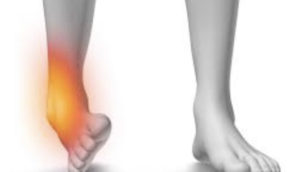CORE Physical Therapy In Omaha Explains…
By Dr. Mark Rathjen PT DPT CSCS
CORE Physical Therapy & Sports Performance PC
Owner
17660 Wright St. 9/10/11
Omaha NE
402-933-4027
What does the evidence say?
Ankle sprain rates decrease in healthy and active population with proprioceptive training.
Whats does that mean?
It means with specialized exercises and hand picked functional activities for athletes and particular sports will benefit with education in injuries to the ankle. It includes balance, biofeedback, reaction drills, multi tasking coordination activities, sports specific exercise, and eyes closed training,
How does that effect my rehab?
We integrate all rehab programs with proprioceptive drills that are specific to your strengths, weaknesses, and sport needs.
How can CORE in Omaha Help me?
CORE Physical Therapy in Omaha specializes in sports specific rehab and athletes. Because of this, we work hard to form a plan specific to each individual and their respective needs with returning to sports. We not only get you back to full capacity here at our Omaha clinic, we make you better.
C.O.R.E. Physical Therapy and Sports Performance PC,
17660 Wright St, Suites 9/10/11
Omaha, NE 68130
402-930-4027
CORE Physical Therapy is a small family owned business.
CORE Physical Therapy has no investors.
CORE Physical Therapy runs completely independent.
CORE Physical Therapy competes against huge companies and Hospitals.
CORE Physical Therapy has won Best of Omaha, 2016, 2017, 2018, 2019, 2020, 2021.
CORE Physical Therapy has to be better than its competition to compete.
CORE Physical Therapy is different, Come see the CORE difference.
At CORE Physical Therapy in Omaha, We specialize in the treatment of athletes. We have worked with athletes for a combined 30 years. CORE was established in 2015 by Dr. Mark and Dr. Claire Rathjen. CORE is family owned and operated.
Proud winners of the Omaha Choice awards for 2016, 2017, 2018, 2019, 2020,2021
Expertise award winners 2018, 2019, 2020, 2021, 2022
Faces of Omaha Winners 2018, 2019, 2020, 2021, 2022
We are proud to serve the greater Omaha metro area; Gretna, Elkhorn, Papillion, Bellevue.
For More information, Please feel free to contact us http://coreomaha.com/contact/
Please feel free to follow us at https://www.facebook.com/COREomaha/
To get started http://coreomaha.com/getting-started/
For more Blog information http://coreomaha.com/blog/
Youtube Account linked below.
https://www.youtube.com/channel/UCVg8OSN5h-i1n_ykw1Gvahg?view_as=subscriber
Proprioceptive Training for the Prevention of Ankle Sprains: An Evidence-Based Review
- PMID: 29140127
- PMCID: PMC5737043
- DOI: 10.4085/1062-6050-52.11.16
Free PMC article
Abstract
Reference: Schiftan GS, Ross LA, Hahne AJ. The effectiveness of proprioceptive training in preventing ankle sprains in sporting populations: a systematic review and meta-analysis. J Sci Med Sport. 2015;18(3):238-244.
Clinical question: Does the use of proprioceptive training as a sole intervention decrease the incidence of initial or recurrent ankle sprains in the athletic population?
Data sources: The authors completed a comprehensive literature search of MEDLINE, CINAHL, SPORTDiscus, and Physiotherapy Evidence Database (PEDro) from inception to October 2013. The reference lists of all identified articles were manually screened to obtain additional studies. The following key words were used. Phase 1 population terms were sport*, athlet*, and a combination of the two. Phase 2 intervention terms were propriocept*, balance, neuromusc* adj5 train*, and combinations thereof. Phase 3 condition terms were ankle adj5 sprain*, sprain* adj5 ankle, and combinations thereof.
Study selection: Studies were included according to the following criteria: (1) the design was a moderate- to high-level randomized controlled trial (>4/10 on the PEDro scale), (2) the participants were physically active (regardless of previous ankle injury), (3) the intervention group received proprioceptive training only, compared with a control group that received no proprioceptive training, and (4) the rate of ankle sprains was reported as a main outcome. Search results were limited to the English language. No restrictions were placed on publication dates.
Data extraction: Two authors independently reviewed the studies for eligibility. The quality of the pertinent articles was assessed using the PEDro scale, and data were extracted to calculate the relative risk. Data extracted were number of participants, intervention, frequency, duration, follow-up period, and injury rate.
Main results: Of the initial 345 studies screened, 7 were included in this review for a total of 3726 participants. Three analyses were conducted for proprioceptive training used (1) to prevent ankle sprains regardless of history (n = 3654), (2) to prevent recurrent ankle sprains (n = 1542), or (3) as the primary preventive measure for those without a history of ankle sprain (n = 946). Regardless of a history of ankle sprain, participants had a reduction in ankle-sprain rates (relative risk [RR] = 0.65, 95% confidence interval [CI] = 0.55, 0.77; numbers needed to treat [NNT] = 17, 95% CI = 11, 33). For individuals with a history of ankle sprains, proprioceptive training demonstrated a reduction in repeat ankle sprains (RR = 0.64, 95% CI = 0.51, 0.81; NNT = 13, 95% CI = 7, 100). Proprioceptive training as a primary preventive measure demonstrated significant results (RR = 0.57, 95% CI = 0.34, 0.97; NNT = 33, 95% CI = 16, 1000).
Conclusions: Proprioceptive training programs were effective in reducing the incidence rates of ankle sprains in the athletic population, including those with and those without a history of ankle sprains.

